Host response is the reaction of the body to tissue damage, autoimmunity, or invading pathogens such as bacteria and viruses, and can be a valuable tool in assessing the presence and progression of acute infections.
Available from a simple blood draw, host response can help determine an infection’s presence, type, and severity, as well as the most appropriate course of treatment.

Regardless of infection type, dysregulated inflammation can lead to the progression of infection and the eventual development of sepsis.
As infection progresses to sepsis, severe inflammatory stress is reflected as a “genomic storm,” which demonstrates significant changes in the gene expression of immune response signals.1,2
Alternatively, the immune response can adapt appropriately, clear an infection, and return the patient to good health.
By utilizing a simple blood draw to measure the pattern and magnitude of gene expression in patients with suspected infections, providers can determine the type and severity of the infection and whether a patient is becoming septic.
The immune response to an infection can be healthy or turn harmful when dysregulation occurs. Depicted below is an example of the response to a bacterial infection.
Appropriate Immune Response: Steps 1-3
Dysregulated Immune Response: Steps 1-6
If response is dysregulated, steps 4-6 apply.


Measuring the level of expression of genes (mRNA) associated with the immune response is becoming a routine approach to discerning between a diseased and healthy state.3, 4, 5
Better understanding of the host (immune) response has the potential to address a variety of unmet needs, providing benefits such as:

Interpretation of the immune system’s response to disease, including acute infections and sepsis, is now possible thanks to advances in gene expression measurement technology and advanced bioinformatics, including machine learning.
These tools have also been used to cluster patients with sepsis into subgroups, allowing for more personalized treatment decisions.5

Including numerous diverse studies in discovery and training stages of development addresses the generalizability challenges routinely found in simpler single-cohort–based test development.6 By analyzing more diverse and broadly populated patient groups, host response diagnostic tools may offer clinicians more confidence when applying them to inform clinical decisions.
As of February 2024, dozens of studies representing thousands of patient samples from diverse clinical settings have been used to identify the best genes and train and validate classifiers that inform on infection presence, type (BVN), and severity (SEV). These classifiers combine the expression levels of genes associated with immune response with advanced bioinformatic methods, including machine learning to generate actionable scores.7


